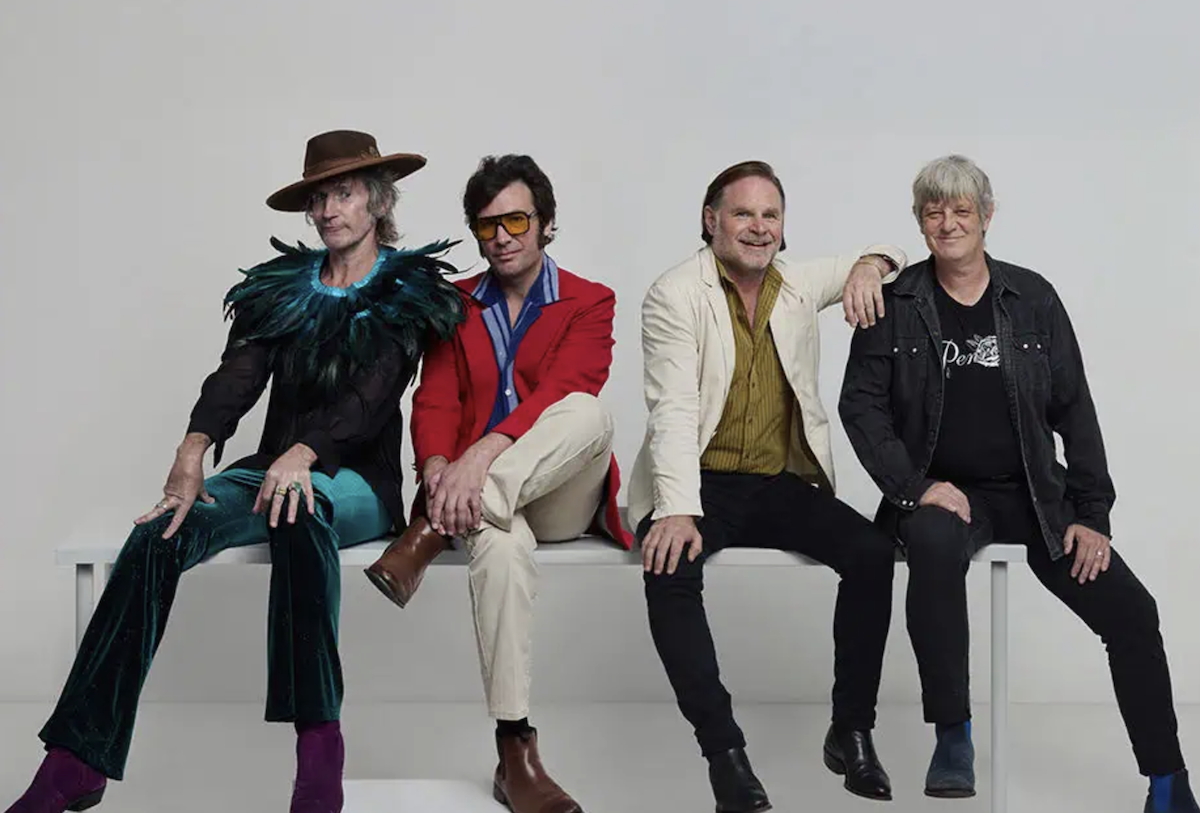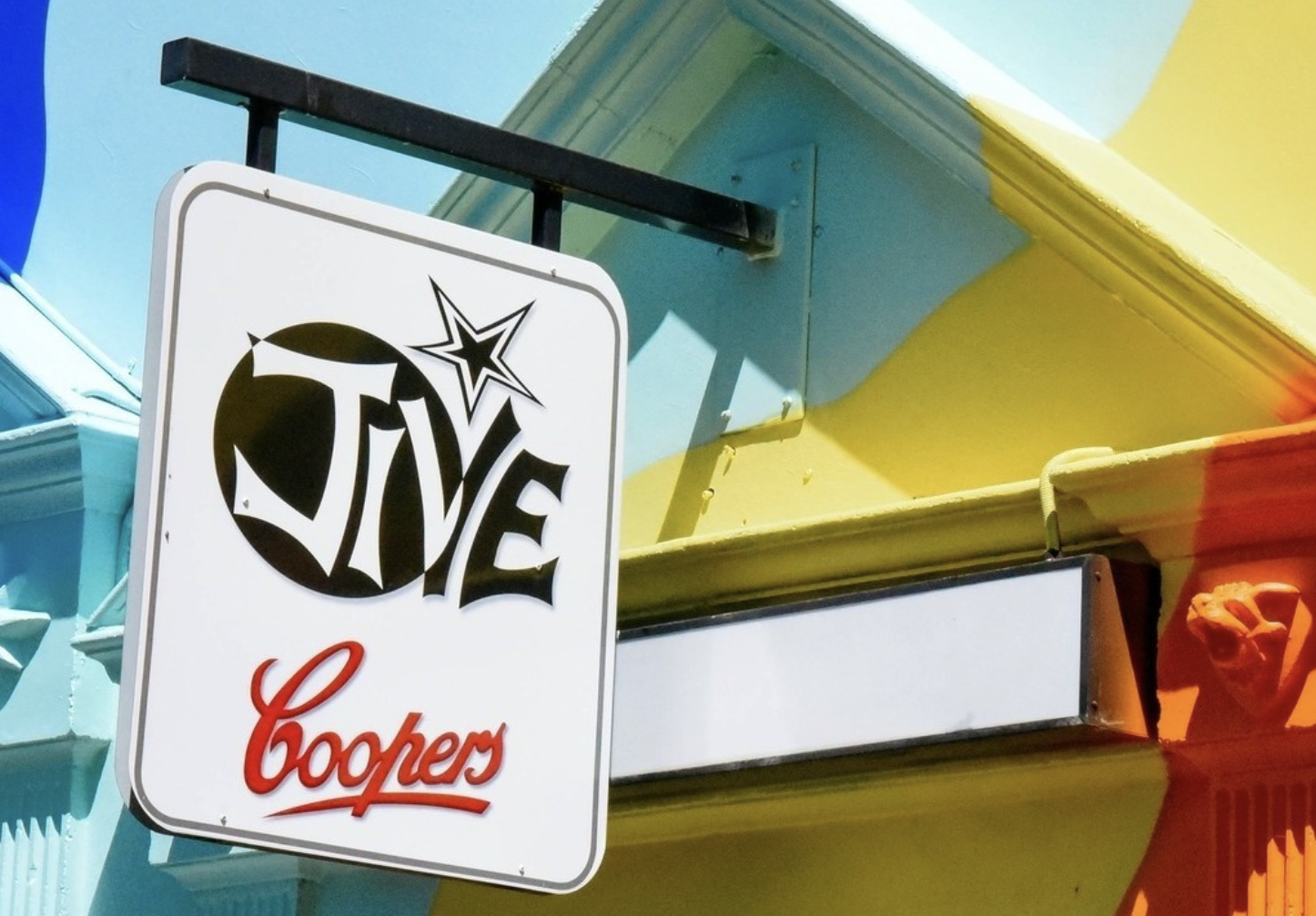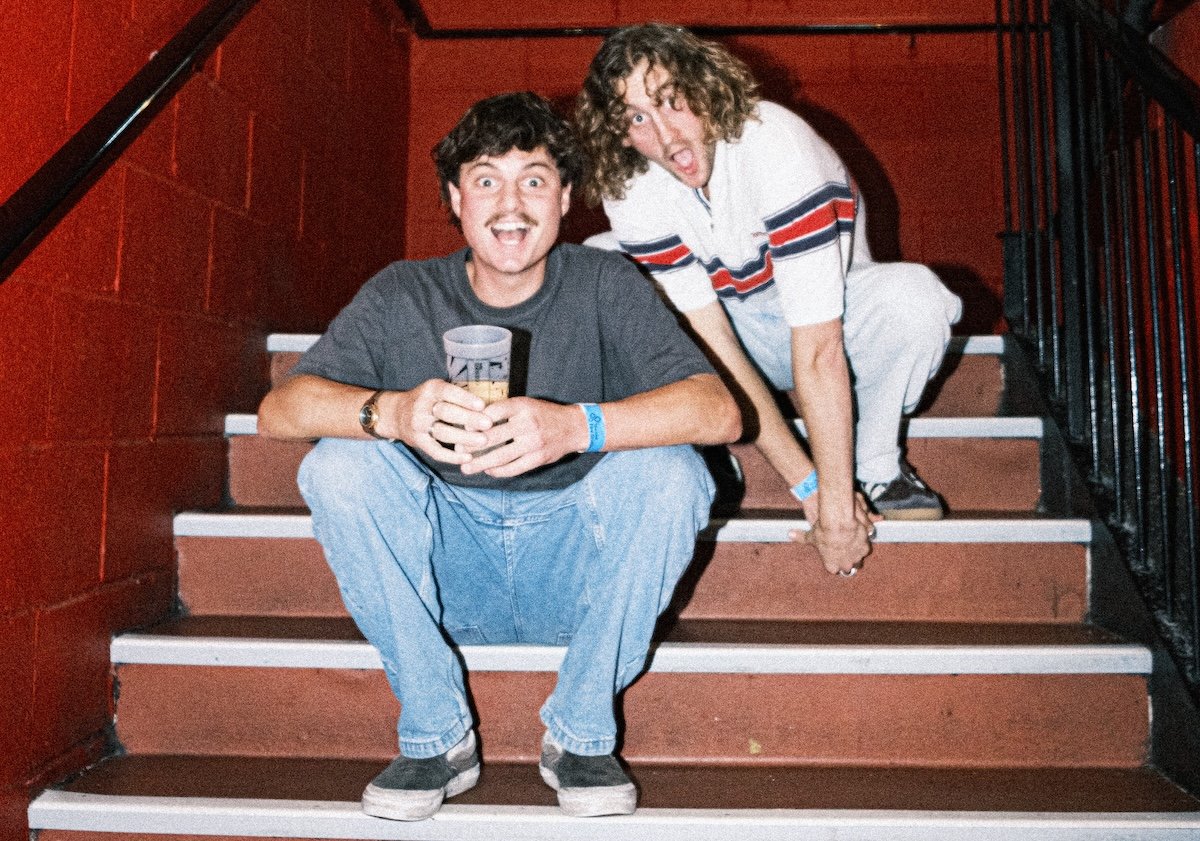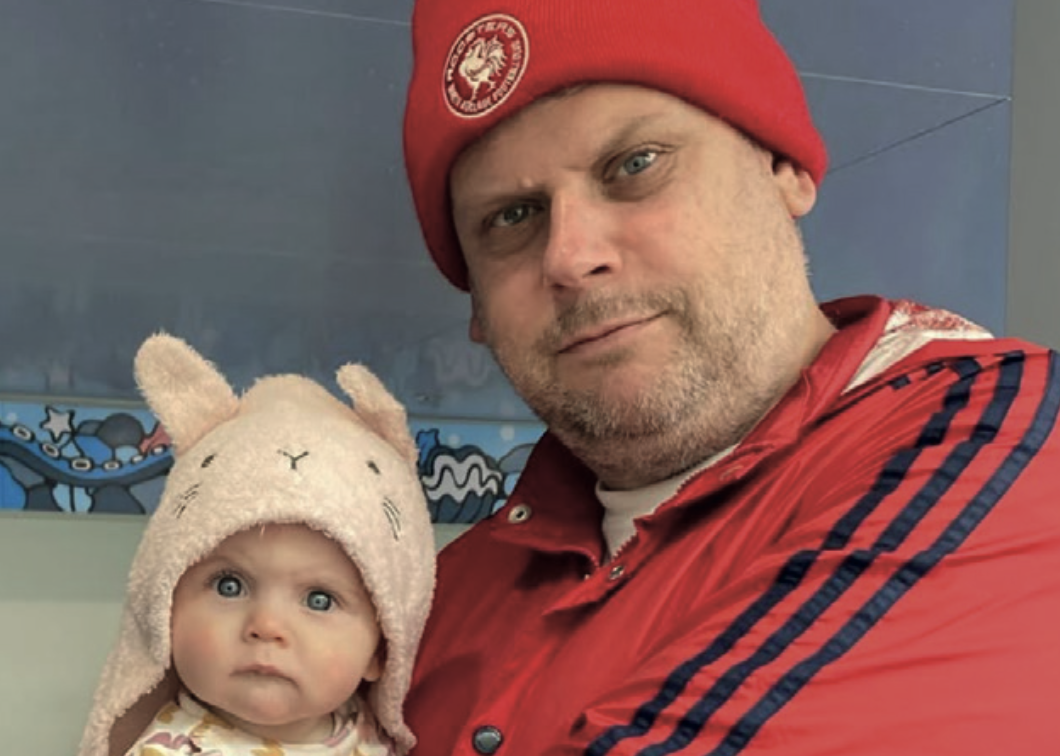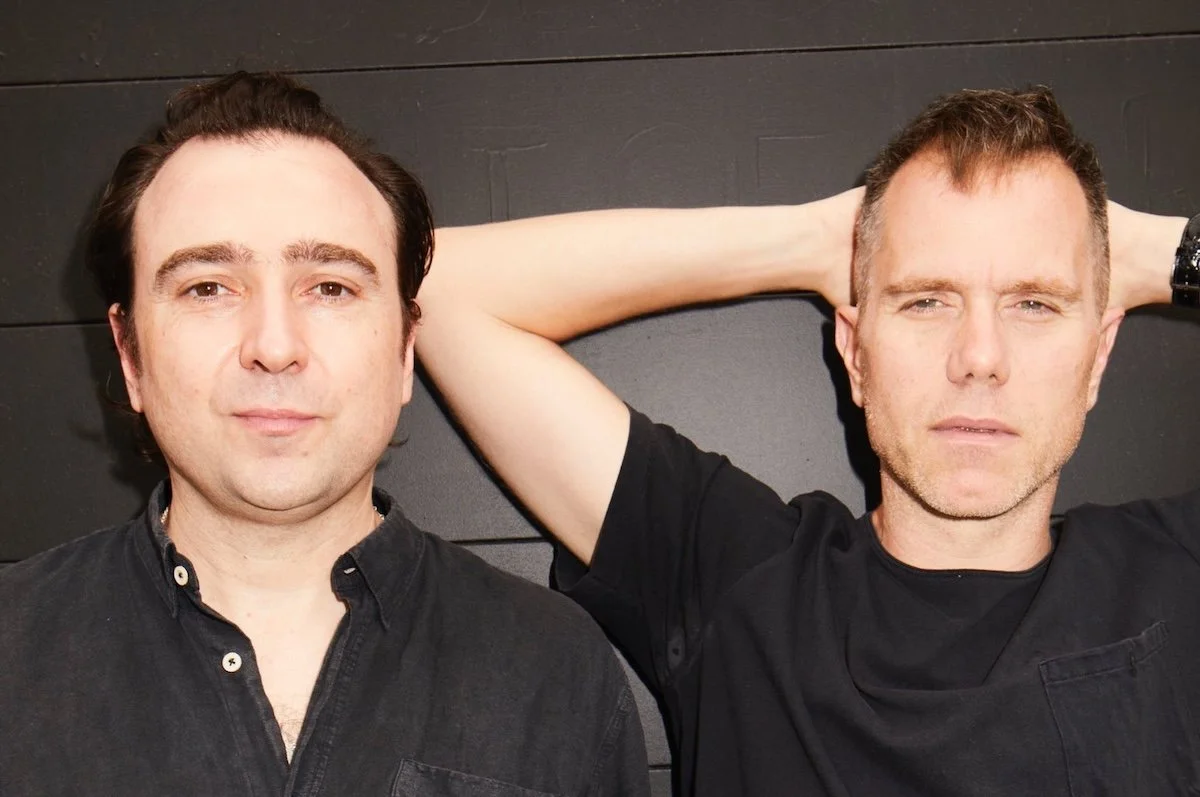Eyrie: The Weight Of A Leaf
We speak with folk band Eyrie — Adelaide’s pre-eminent storytellers — on the way South Australia doesn’t always give arts its dues
Words by Emily Wilson
Glancing up at the violent sky from beneath a slouching fedora, swallowed whole by an oversized pewter overcoat, Miranda Gillam-Grant strikes me as the spitting image of a 1940s noir femme fatale who is about to make life incredibly complicated for Humphrey Bogart. Her sister, Clara, is smoking like a pirate, a hand-rolled cigarette tucked into the right-hand corner of her mouth. They’re both fae-like, emphatically discussing the symphonies of Ralph Vaughan Williams and giggling as they finish each other’s sentences beneath the rain, which is shooting bullet-like off the pavement.
We’re sitting just outside of The Grace Emily on a Monday night, having chosen to congregate around a table a mere inch from the road - a decision that I am largely regretting, given the audio of my tape recorder is battling against car alarms, revving motorcycle engines, accelerating downpour and sharp cracks of thunder. Miranda is pleased that she had the foresight to wear her fedora.
Fittingly, The Grace Emily is where Eyrie - the musical brainchild of Miranda and Clara - hosted their ‘City Fear’ single launch on April 7. Eyrie’s music is leafy and lush, lyrically-minded folk that soothes and rends. Lightning flashes intermittently as Miranda explains to me how Clara taught her to play guitar and to harmonise (though she could already play the piano and the viola), and how they both grappled with Thomas Hardy obsessions as teenagers.
“I really wanted to make a folk band,” Clara says. “And I really wanted Miranda to be in it because she’s my sister.” Towards the end of high school, the two sisters and Daisy Elliot – a gifted violinist – started Eyrie. However, when the prestigious Queensland Conservatorium called for Elliot, she suggested that Thea Martin became involved in the band in her place. The outfit continued as a tight-knit three-piece for a year, just beginning to craft the lush, full-bodied songs that they are known for today, before the “mighty Allan McBean” joined. He and Clara met while studying together at Adelaide’s Elder Conservatorium of Music. “He ended up playing bass for us as well. Then we ended up with the four-person model.”
I saw Eyrie play recently beneath a tent erected in the courtyard of the Art Gallery of South Australia (AGSA) at a First Friday event. Once a month, the cafe-restaurant at the back of the gallery is open at nighttime, serving booze and snacks to those who want to sip on a cheeky Aperol spritz after having glanced at a John Waterhouse painting.
As someone who used to serve behind the bar at AGSA_eat - a venue where the majority of the customers inevitably ask for their skinny flat whites to be extra hot - I’ve seen all sorts of acts lend atmosphere to a First Friday. For example, I have witnessed more Mariachi bands play in the courtyard of the Art Gallery than I assumed I would ever see in my entire life, all playing during the tenure of the Frida Kahlo and Diego Rivera exhibition that showed in 2023. (Thus, I have witnessed an obscene amount of tequila-fuelled conga lines wind their way in between gallery staff). But I have never seen anyone like Eyrie play there. When I see Eyrie play, it is simply impossible for me to hold my emotions in my hands – it all overflows. This was still true despite the shoddy sound engineering and drunken chatter that threatened the clarity of Miranda and Clara’s sharp harmonies.
When you listen to Eyrie, you are rewarded. (I saw a redheaded child watching the band intently as she shoved churro after churro into her mouth. She very much seemed to be experiencing something transcendent, even if her parents were too preoccupied by chardonnay and gossip to be fully immersed in the music that was being played for them.) ‘Haunting’ seems too obvious as an adjective, but it is nonetheless accurate.
Eyrie maintained momentum through a comparatively long set (an hour), without leaning on any covers. They are playful with each other onstage, grinning at each other in between and during songs. At the Grace Emily, Clara says the social aspect of making music is crucial to her craft: “I like making music with other people. It’s like another way of having a conversation.” She latched onto Eyrie’s violinist, Thea, as an example of this kind of relationship. “I love playing with Thea - that’s what I like about music: the act of actually connecting with other people while you’re playing with them.”
“I’m such a shy performer,” Clara continues, laughing softly. “Singing in front of an audience is so bizarre...I guess because it’s something that is personal. I love rehearsing, and I love songwriting, and I love playing for myself. But playing for an audience… doesn’t feel like the reward at the end of the road, it just feels necessary. I like the rehearsals more.”
Miranda cuts in. “See, I feel like I get impatient in rehearsals...I feel like if I can’t put my song out in the world in a public setting, it’s not quite come into being yet. Even though I still feel overwhelmed by the attention, in the actual act of [performing] I’m like, ‘this is great’. I love playing for people… for an appreciative audience,” she specifies. “There’s so much going on inside of me. Who knows what’s real and what’s not if it hasn’t made its physical mark on the world?”
I ask Miranda if her music allows her to figure out what’s real and what isn’t.
“Maybe. Maybe it blurs the boundaries even more. It’s a tether to something. It’s something.”
While we sip our wine, I learn that the band was originally called Tess and the Tide – a reference, of course, to Thomas Hardy. Both Miranda and Clara, it seems, have always been quite faithful to pastoralist traditions. But eventually the need for a short, snappy name prevailed over immortalising poor tragic Tess Durbeyfield.
“An eyrie is an eagle’s nest,” Clara explains. “But not in a tree – it’s got to be in a cliff.”
I’m fascinated by the ways in which the process of songwriting differs and coalesces between the two of them.
Miranda has been making up songs since she was taking her first steps - it seemed natural for her to simply keep making up songs and telling stories. “I’ve been that way my whole life, it just comes [to] me naturally. Stories that aren’t my own as well. Sometimes songs are about me, sometimes they’re exploring things that aren’t even a part of me.”
“I feel like a lot of your songs are about an idea that you want to write about,” Clara interjects. “And for me it’s always about, like,” she breaks spontaneously into song - “I can’t believe my heart got broken.”
For Clara, songwriting is a way to process and compartmentalise emotions. She says it stems from the desire to “have something tangible out of having to navigate the emotional turmoil of day-to-day life.”
I’m surprised to learn the songwriting process is totally separate for the sisters – they arrange together, but the writing process is completely solitary.
“We’ve never written a song just the two of us. But we should try,” Clara says, as if the thought has just occurred to her.
“I think we did try once and we ended up being too silly and laughing,” Miranda adds. “You enter your emotional state; I enter my very inner imaginative world. I feel like we’re too introspective in our songwriting. It’s probably a skill we need to work on: how to write songs together with other people just in general.”
“That’s true,” Clara agrees. “It’s super personal for me. I don’t want to show Miranda a song until I’ve decided that it’s finished.”
“Yeah, same,” says Miranda. “I get shy.”
In general, Clara is still trying to figure out the “optimum order” of her songwriting process. Miranda seems to be slightly more self-assured in this department: she knows that it works best for her to experiment with words and tuning, and to wait for the words to come later. For Miranda, melody always comes first.
Clara is more lyrically leaning. “I will write a bunch of lyrics, and then when I want to write a song, I’ll go through and find lyrics that I think will work in the song.”
Miranda nods to Clara. “See, I want to be more like that, but… I have the whole song and I’m just singing random words until eventually lyrics fit. You’ve seen in my notebook that I write it out and it’s done, and there’s not a lot of editing. And I don’t have a running record of words like you do, and sometimes I do get stuck because of that.”
“I think a lot of the time, when I try to write a song, I’m like, ‘Maybe I should just be a poet’,” says Clara. “I got lyrics coming out my ass. And then figuring out what chords to put with them... Well, that seems to be a different story.”
I ask if they notice any recurring themes in their work: if there are topics and motifs that they see themselves repeatedly coming back to.
“For sure!” Clara cries, rolling herself a cigarette. “Literally all my songs are about wolves, birds, feeling anxious and not knowing why, feeling wistful and not knowing why, feeling melancholy and not knowing why.” Clara says she used to be self-conscious that what she was saying in her music might appear to be too obvious and simple. But she realises now that, “These are things that need to be said repeatedly. It’s so critical to be repeatedly exposed to art that’s like, ‘Wow, isn’t this great? Isn’t this beautiful?”
“I feel like that’s the same for sharing your art with the world,” Miranda says. “Because even if I’m in my little bubble where I’m constantly thinking about the weight of a leaf and the shine of the rain on the streets, it doesn’t mean that everyone else is doing that. You can never be reminded too much of the beauty of things.”
“The moment that I get reminded is when I see a friend play,” Clara says, agreeing emphatically. “And I hope that when I play, someone else gets the experience of being like, ‘So true, queen.’”
“Or when someone tells me they’ve cried during a performance of mine,” Miranda says, “I’m like, ‘I’m so sorry’, but I’m also really glad? Because I want them to feel things as intensely as I do.”
Music, for both of them, is a consistent comfort – a consistent reason for being.
“In my day-to-day, I use playing songs just to ground myself in my body,” Clara says. “Singing is such a good thing for the nervous system. I think everyone should sing – I think it’s just so natural for humans.
“We spend so much time talking, but every animal has calls, or language. I feel like singing should just be like a generic part of that human experience.”
Miranda says music helps her emotionally regulate. “If I go away for a couple of nights, I need to have my guitar. It’s like an anchor. Music allows me to become reconnected with some more intrinsic sense of self that lies apart in a more spiritual plane.”
Perhaps performing their music live is their way of offering a sense of spiritual betterment to the people around them. It’s a shame, then, that so often in South Australia the arts is treated as an accessory to the consumption of booze, rather than something that can allow one to feel things deeply – to commune with the things within oneself and beyond oneself.
This frustration I harbour struck me as I was watching Eyrie live at the gallery: Clara and Miranda resplendent in their coiled ringlets, Thea Martin in their schoolboy blazer and scruffy white Converse, Allan McBean looking solemn as he leant over his unwieldy instrument. People were there in the audience, but they weren’t there to listen. They were there to drink and chat, and Eyrie was there to provide a pastel background -- easy listening -- despite the fact that they’re worth a lot more than that. I left the gallery after Eyrie’s set, but have spoken with McBean recently, who said that the attention span of the audience continued to wither over the course of the next musical act.
Why hire anyone at all to play?
There is total unity between Clara and Miranda onstage. Clara looks up while she sings; Miranda looks beyond. But they still follow each other’s footsteps, somehow.
I feel like I’ll make music with Miranda forever,” Clara says. “You can make music with anyone forever, of course. But something about being sisters and feeling like I’ll know Miranda until the day I die...it’s like a way in which we can share our lives.”
Miranda says she feels truly musically comfortable with Clara. “I’m never going to be dreading rehearsal because it’s just my sister on my bed.”
I ask Clara -- given that she’s three and half years older than Miranda -- if it feels like she’s in charge.
“No!” she cries, laughing. “No. It used to.”
“Honestly, I was always fine with you leading the ship,” Miranda says.
“It’s good we get to share the load now.”
Eyrie is the focus of this piece, of course, but the sisters have also siphoned some of their musical efforts into a duo, which operates under the moniker Gilly and Bede.
Miranda says her father had approached her to record a few solo songs at Forest Range Studios and she decided to record under the name Mirande Bede – a reference, I assume, to the English monk and scholar who is often considered the father of English history. Then, people approached her to do solo gigs. Of course, Miranda asked Clara to play cello and contribute backing vocals.
The sisters will always play together. Clara says having a separate project allowed the pair to create “such a fun, little, intimate and satisfying sound.” Both also realised they had songs that didn’t necessarily fit in the Eyrie universe, but they wanted to play them – and they wanted to play them together.
I ask how they can tell if a song is for Eyrie or for Gilly and Bede. Clara explains that Gilly and Bede has a more “intimate bedroom sound,” whereas Eyrie songs have “a little more pump.”
What do they see for Eyrie’s future? What do they see for Gilly and Bede’s future? I wonder if the two things are different at all.
“The thing with Eyrie is, none of us are really sure what we’re going to be doing over the next couple of years,” says Clara. “We want to record some stuff this year, so we have at least a record. If we’re still playing together in a year or two, that’s awesome.”
But there’s really no telling. So, Gilly and Bede, for them, “provides the comfort of knowing that we will always be playing together in some form for a long, long, long, long time.”
As our interview wraps, Clara decides it’s time to interview me. “I have a question for you – and you too Miranda – because I’m still trying to figure this out for myself. For me, there are two sides to making art. One is to say something serious and profound and authentic. The other is to play.
“How do you balance that feeling of wanting to be playful and being like, ‘This is going to change people’s lives?”
There is a moment of silence, pregnant with steady contemplation. The rain is more gentle now - there’s still the constant drumbeat of water on the pavement but the thunder is gone. All three of us care about the question; all three care about the answer, if there is one.
“I think that you don’t really need to search for a middle ground,” Miranda says. “Because if you’re doing what you want to do, and doing it well from years of practice, then it can be playful and change people’s lives.”
I agree that I don’t believe the two have to be mutually exclusive.
“If you’re playing, you’re discovering things. And if you’re discovering things then you’re making profound music,” Miranda continues.
I ask Clara if she feels there is a difference between those two drives.
“I think the balance has shifted for me over the past year or so,” she explains. “Everything I wrote in school was very serious -- very old folky moralistic vibes. Now, I’m much more engaged with the idea of music as play and as a way for people to connect and engage with each other.”
“I feel like that’s what folk is,” Miranda says.
I, as I am wont to do, bring up Bob Dylan. He is perhaps considered the most important lyricist of all time. But he is also definitely a contender for the silliest guy of all time. The sisters agree.
“Folk music is music for everybody,” Miranda says. “It’s music for the common people, historically. Honestly, the most serious things are the least serious things. That’s kind of my mindset.”
“I think that’s how I process serious things: I have to come out with an attitude of playfulness,” Clara says.
“I have one more thing for the record, guys.” Miranda points, with sisterly accusation, at what Clara is wearing. “That’s my jacket.”
You can listen to Eyrie on Bandcamp here, or Spotify here. Follow them on Instagram here.






